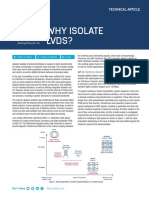0% found this document useful (0 votes)
24 views87 pagesDICD Fall 2024 Lecture 08 Sequential Logic
The document discusses the design of sequential logic circuits, focusing on the principles of sequential logic, timing parameters, and various implementations of latches and flip-flops. It highlights the importance of sequential logic in managing timing issues and ensuring data stability through examples like accumulators and pipelining. Additionally, it covers key concepts such as setup and hold times, as well as different types of latches and their characteristics.
Uploaded by
atifrafiquebaloch504Copyright
© © All Rights Reserved
We take content rights seriously. If you suspect this is your content, claim it here.
Available Formats
Download as PPTX, PDF, TXT or read online on Scribd
0% found this document useful (0 votes)
24 views87 pagesDICD Fall 2024 Lecture 08 Sequential Logic
The document discusses the design of sequential logic circuits, focusing on the principles of sequential logic, timing parameters, and various implementations of latches and flip-flops. It highlights the importance of sequential logic in managing timing issues and ensuring data stability through examples like accumulators and pipelining. Additionally, it covers key concepts such as setup and hold times, as well as different types of latches and their characteristics.
Uploaded by
atifrafiquebaloch504Copyright
© © All Rights Reserved
We take content rights seriously. If you suspect this is your content, claim it here.
Available Formats
Download as PPTX, PDF, TXT or read online on Scribd
/ 87






















































































